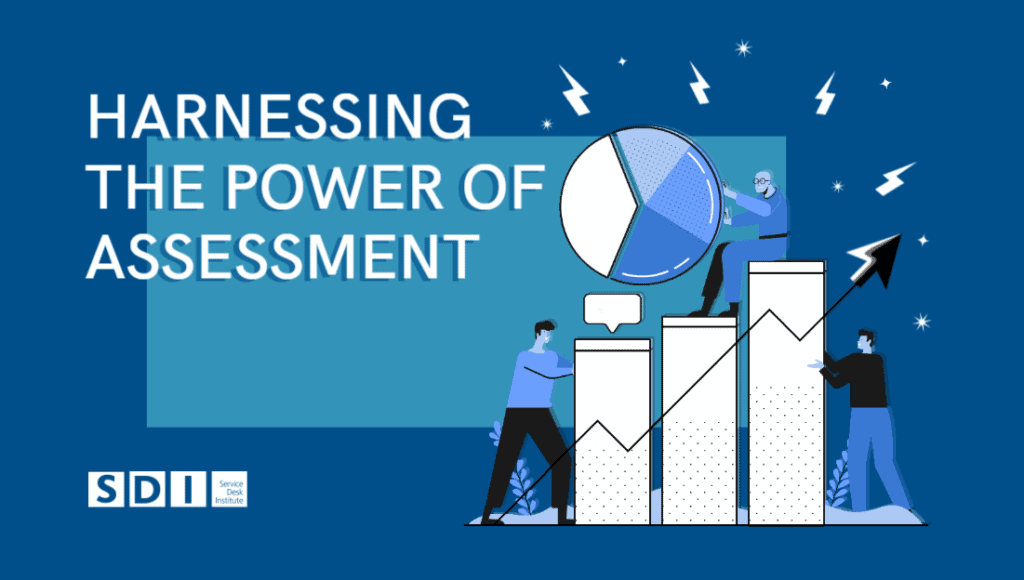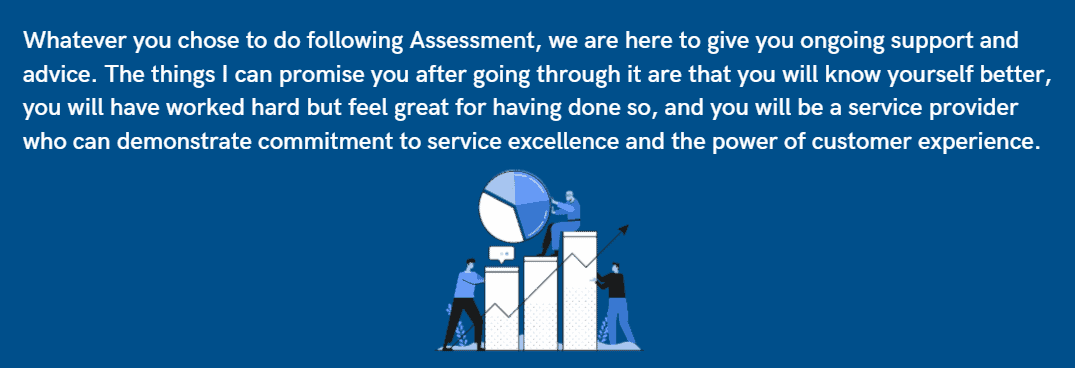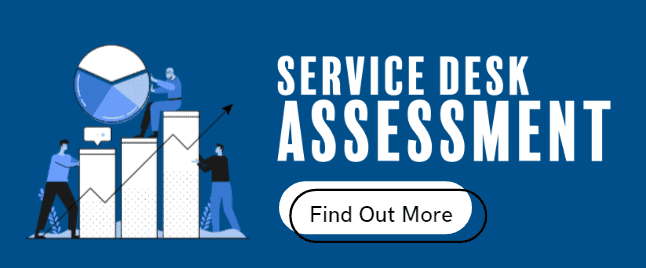
Harnessing The Power of The Service Desk Assessment
Harness the Power is a blog series written by ITSM experts and authors. The series will focus on 5 of the 9 concepts of best practice within a top performing IT service operation and explain how the Service Desk Assessment in particular, as a powerful transformation enabler will guide you on the path to global service excellence.
This is Part 1
By John Noctor, ITSM Best Practice Consultant & Trainer
As a trainer, consultant and auditor for the SDI, I am often asked about the benefits of going down the route of Service Desk Certification (SDC) and, in particular, how taking the Assessment will be of value to the service desk and wider IT organisation.
All I can say is that every service operation I have worked with at the Assessment stage of the SDC programme has seen real benefit and enabled transformation within their service desk and IT department as a result. SDC requires work and commitment to achieve its full potential in terms of success, but without fail, every client has told me they that they are a much better service provider, business partner and employer as a result of that work and commitment.
Transformation Enabler
SDI’s Service Desk Assessment is an engaging two days. You will face some tough questions and some easy ones. You will have to think a lot – and be honest about – your service. You will also see a path to achieving your service desk’s potential and being able to demonstrate this to your customers and stakeholders. You will get to know yourself better – your strengths and challenges – and dare I say it, you will have fun along the way!
In terms of the value of the Assessment, when asked my answer is simple. I see its value in three areas:
It gives you a benchmark against other companies in your industry sector
It gives you a better understanding of your own levels of maturity against an external (and industry recognised standard)
It is a powerful continual improvement programme
In my opinion, the true power of an Assessment is that third element, continual improvement. We all talk about it, we all believe in it, and we all think we either are doing it – or should be!
CSI Showstoppers
However, in my experience, continual improvement has some major questions and challenges that an IT provider has to address in order for it to be effective. These are:
We are so busy chopping down trees we don’t have time to stop and sharpen the axe!
We sort of know what we’re good at but we’re not sure how to validate this
We don’t know where to start!
What should we concentrate on?
Who should be involved and what’s needed to achieve improvement?
How do we know when “we’ve got there”?
The CSI Starter
The answers to all of the above, are, for me, in the beauty of the Assessment:
We advise you on the structure of the two days, which effectively guides you in setting up an Assessment, using SDI’s online tool and in understanding who needs to be in each of the auditor-led sessions for each concept area. There are 9 concept areas which form the Service Desk Institute’s (SDI) Global Best Practice Standard for Service Desk (Best Practice Standard):
Leadership
Policy and Strategy
People Management
Resources
Processes and Procedures
Managing Employee Satisfaction
Managing the Customer Experience
Management Information and Performance Results
Corporate and Social Responsibility
Each concept has a detailed set of questions, specifically designed to show what you do well, what you don’t do but should, and what you are doing but really should do better.
The output of the Assessment is a comprehensive (and I mean comprehensive, it’s usually around 60 pages!) guide to the areas we see that require improvement, they are clearly identified and selected in line with our observations and understanding of your aims and objectives.
Your report will give you a rating against our Best Practice Standard and give clear guidance as to where you need to focus your continual improvement activities.
Following the Assessment, you will have a good understanding of the actions required and who will need to be engaged to achieve those actions. We pride ourselves on being consultative auditors and this means we are there to give you practical advice and guidance based upon our experience and extensive knowledge of best practice.
Well, continual improvement is always a journey more than a destination, your journey may take you to the next official step which is full Certification, or it may take you on a path purely based upon working towards implementation of improvement suggestions, that’s what I love about this programme, it’s up to you.
Honesty Wins!
During Assessment, we conduct what we call group consensus interviews from which we take a view on what is said based on the input from everyone in the room. Whilst evidence is not required, my advice to every client is: Don’t be too aspirational in your answers!
Think of yourself, if you had to produce proof that you do what you say you do, then how comfortable are you that it exists? It is wiser to say ‘no’ to a question when you are not sure because:
If it is a ‘no’ then it will be included in my report as an area for improvement
If it turns out to be a ‘yes’ upon further investigation, then it’s a quick win!
If you say ‘yes’ and it turns out to be a ‘no’ then it will not be highlighted as an improvement area and therefore could be an area that is missed, when it really should be addressed.
Remember, you want to be brilliant and we want you to be brilliant too! The Assessment exercise and subsequent continual improvement programme means you will be able to PROVE that YOU ARE BRILLIANT!
This is the first part in the Harness the Power blog series, which will look at five of the nine concept areas in the Best Practice Standard. Each part will detail how improvement and focus in these concept areas will make you a better service provider, bringing value to you and your customer.
Go to Part 2: Leadership >>
Go to Part 3: Policy & Strategy >>
Go to part 4: People Management >>
Go to part 5: Resources >>




























